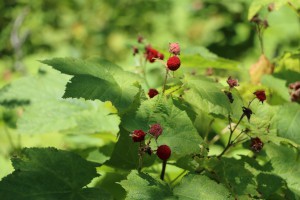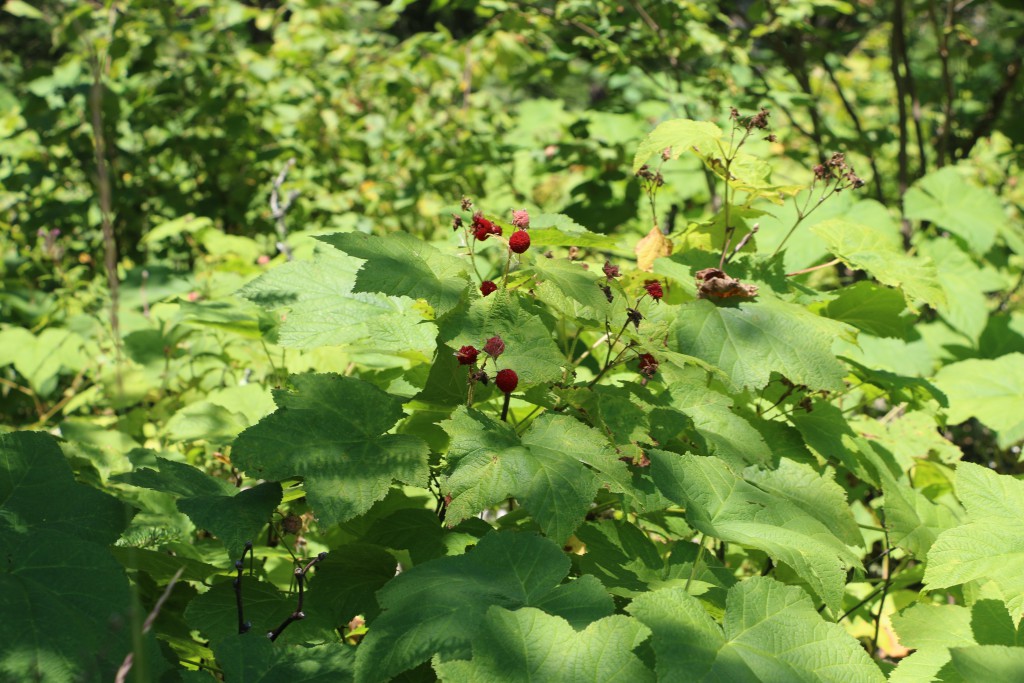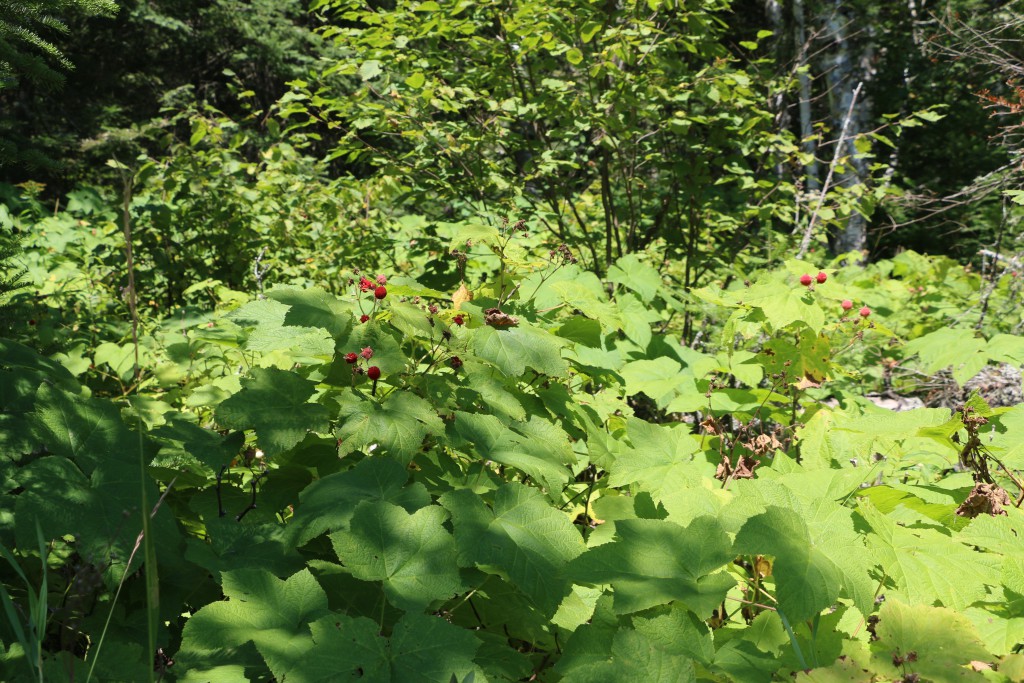Thimbleberries are Good and Good for You

While driving with my kids recently they threatened to put blinders on me. I could see thimbleberry bushes lining the road and I wanted to stop and pick them. I did stop a couple of times and that’s when the kids started to use their hands as blinders. For all of our safety I decided I wouldn’t stop to pick anymore.
Thimbleberries taste good and contain Vitamins A and C. They can be a bit tart but it’s a flavor I enjoy. They are fun to pick because you can usually do so standing upright. Thimbleberries are a delicate berry similar to raspberries so you have to pick them carefully or you can cause other ripe berries to fall off of the plant. If they aren’t quite ripe they will be a little more difficult to pull off and if they are too ripe then they will end up as red mush on your fingers. When they are plucked off of the plant they resemble thimbles so that is how they got their name. I love their leaves because they are big and have a fuzzy feel to them.
If you see me on the side of the road, don’t worry, I’m probably just picking thimbleberries. Here’s some more information about this great berry.
Thimbleberry’s real name is Rubus parviflorus. It is in the Rosaceae (Rose) family and is in the same genus (Rubus) as raspberry, blackberry, loganberry, boysenberry, tayberry, dewberry and many others. Rubus fruit are an aggregate fruit composed of small, individual drupes, each individual is termed a drupelet. In a sense they are many little berries grouped together to make one large berry.
The young shoots, roots and leaves have been used to treat many ailments. A tea is made of the leaves or roots as a blood tonic in the treatment of nausea, vomiting, diarrhea and dysentery. Its effects are believed to tone and strengthen the stomach helping increase appetite. Rich in vitamin C, Thimbleberry helps boost your immune system and was used to ward off scurvy. A poultice of the dried powdered leaves treats wounds and burns and the fresh leaves can be crushed and applied to treat acne. A decoction of the roots has also been taken to treat acne.

Leave a Reply
You must be logged in to post a comment.